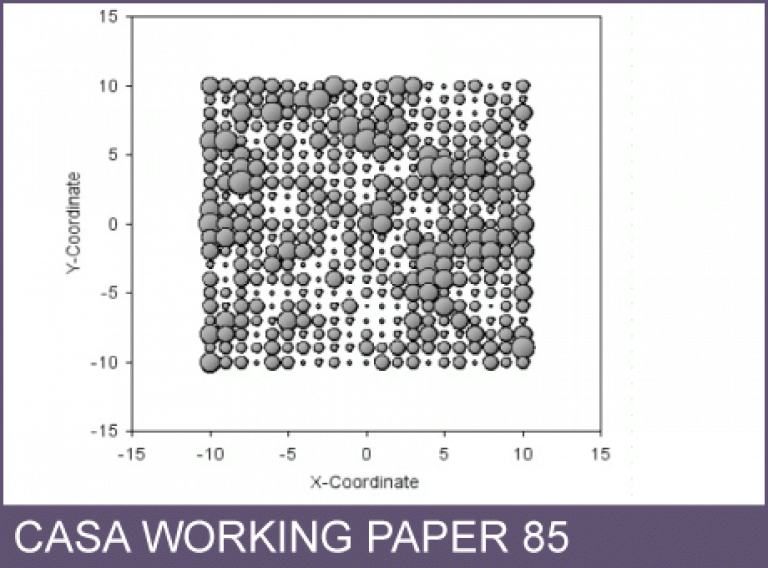CASA Working Paper 85

1 November 2004
Hierarchy in Cities and City Systems
Hierarchy is implicit in the very term city. Cities grow from hamlets and villages into small towns and thence into larger forms such as 'metropolis', 'megalopolis' and world cities which are 'gigalopolis'. In one sense, all urban agglomerations are referred to generically as cities but this sequence of city size from the smallest identifiable urban units to the largest contains an implicit hierarchy in which there are many more smaller cities than larger ones. This organisation approximately scales in a regular but simple manner, city sizes following a rank-size rule whose explanation is both mysterious and obvious.
In this chapter, we begin with a simple but wellknown model of urban growth where growth is randomly proportionate to city size and where it is increasingly unlikely that a small city becomes very big. It is easy to show that this process generates a hierarchy which is statistically self-similar, hence fractal but this does not contain any economic interactions that we know must be present in the way cities grow and compete. We thus modify the model adding mild diffusion and then note how these ideas can be fashioned using network models which generate outcomes consistent with these kinds of order and scaling. We then turn this argument on its head and describe how the same sorts of morphology can be explained using ideas from central place theory. These notions are intrinsic to the way cities evolve and we conclude by noting how city design must take account of natural hierarchies which grow organically, rather than being established using top-down, centralized planning.
This working paper is available as a PDF. The file size is 885KB.
Authors: Michael Batty
Publication Date: 1/11/2004
 Close
Close

